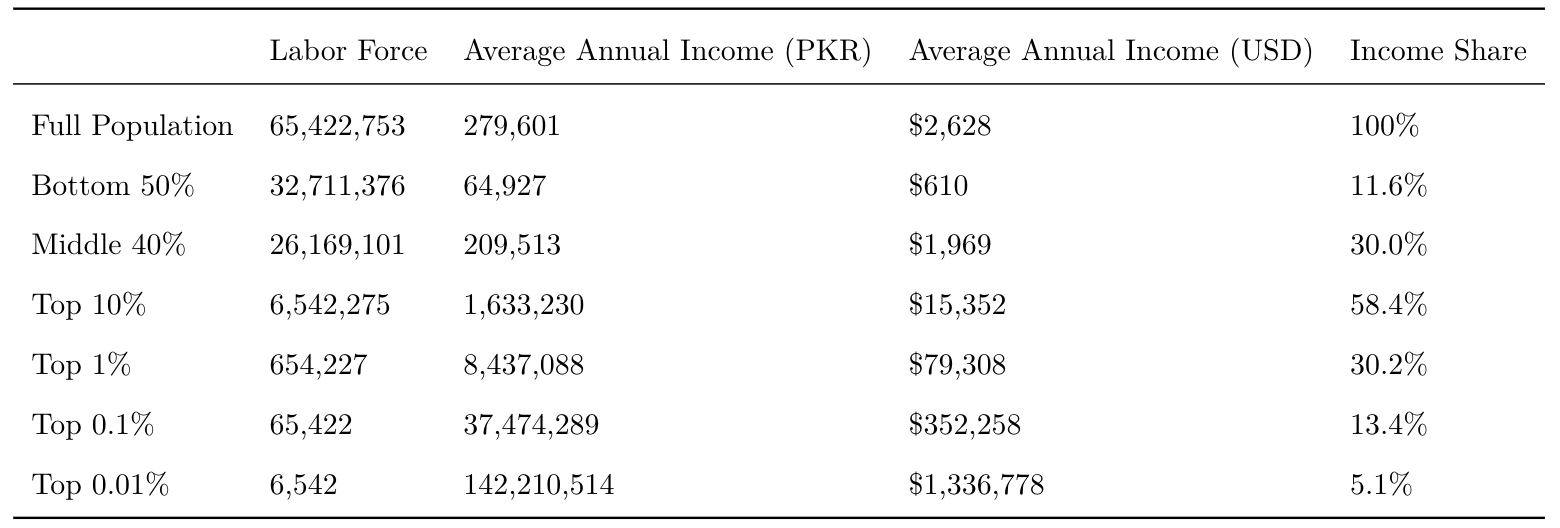It is a well-known problem in economics that survey data is wildly inaccurate for estimating top incomes. As a result, it is exceedingly difficult to derive a country's income distribution from surveys alone. To do so, we must draw on other data sources like taxes, wealth lists and national accounts data.
We combine newly released tax records with survey data to produce estimates for the income distribution of Pakistan. The goal is to divide the aggregate 'national income' statistic derived from national accounts data into strata that represent the full distribution of earners in Pakistan (hence the term distributional national accounts). The following is the main table of our results:
We provide a walkthrough of how we achieved these results in the below files. The original notebooks are above, feel free to send a pull request if you have alternative scenarios or assumptions in mind. You can reach me at ali.ahmed@berkeley.edu if you need help running the software or have any questions or critques.
1) Survey Calculations
2) Tax Calculations
3) Combining Tax and Survey Data
4) Visualization and Conclusions
BETTER ORGANIZATION COMING SOON
Appendix: All Graphs and Tables
Coming Soon!
Full Thesis
============================================================
Final organization and final paper are coming soon - check back May 18th!
Thesis Advisor: Gabriel Zucman
Special Thanks To: Emmanuel Saez and the Pakistan Bureau of Statistics.
If you're non-technical and want to adjust the codes, fear not!
- Download Jupyter Notebook software here (https://jupyter.org/install)
- Read the attached guide that tells you how to run the notebook.
- Open the IPython notebook files (.ipynb) and adjust the code yourself.
- If it still doesn't work, reach out at ali.ahmed@berkeley.edu
